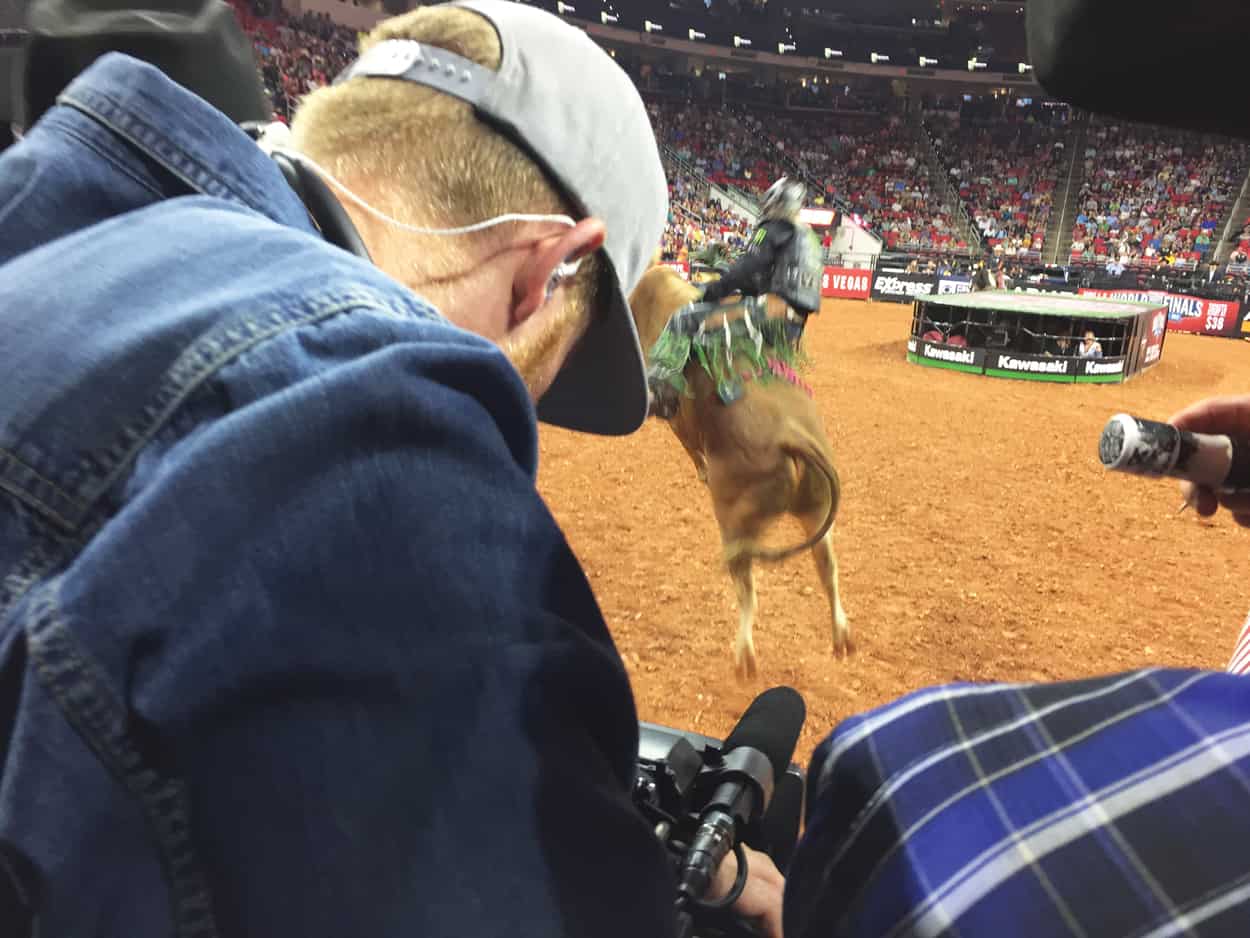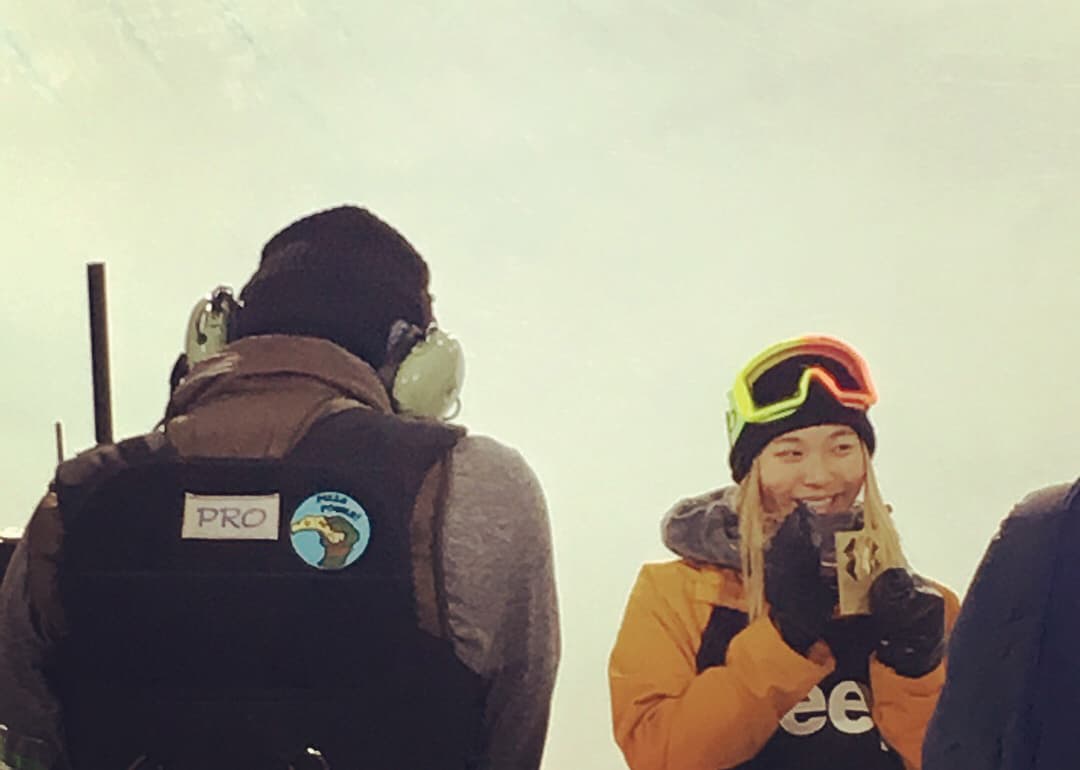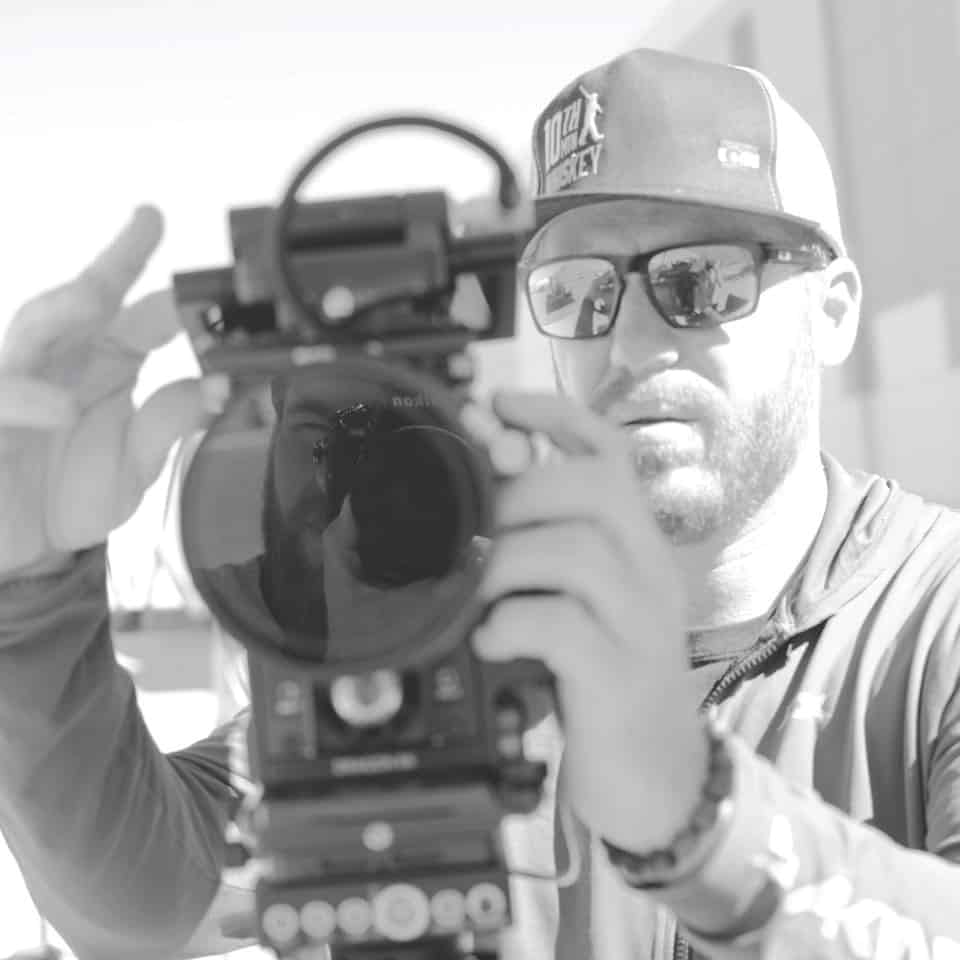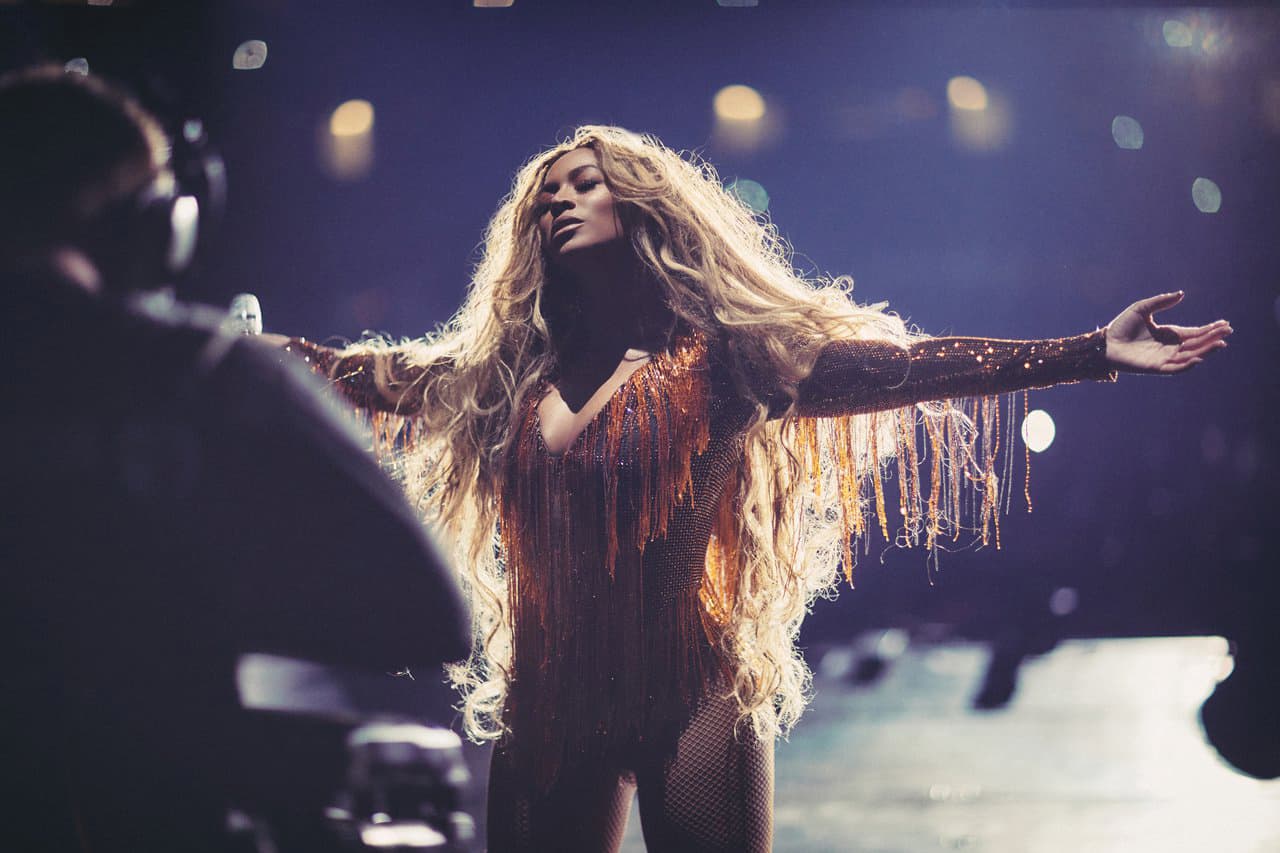We’ll Do it Live: The Art and Craft of the Live Operator
Above Photo: Beyonce: On stage with Queen Bey. Photo by Andrew White
By David Liebling, SOC
THE BEGINNING
My road to becoming a broadcast camera operator was a long and stressful process. I started my career in the TV industry as a utility, pulling cable behind the camera operators during the broadcast. I was fortunate to have been surrounded by very experienced operators who taught me how to build hard cameras, handle panheads, box lenses, and a variety of camera sleds during the show set up. Over time, gaining these skills put me in a position where I could to step in as an operator in the event it was needed. Being surrounded by lots of other talented and experienced broadcast operators, I was certainly not their first choice! At the time, my experience focused mainly on studio setups where I was comfortable framing a talking head, or making a jib float for a wide shot. Luckily, one day my opportunity came to run a camera on a live broadcast of an NHL game. None of my prior experience had prepared me for this, nothing had prepared me for the moment that first red tally light came on. Although it was only during the pre-game show, I will never forget how my heart pounded and my adrenaline pumped—my 3-5 second live shot felt like I was on for an hour! Even though it was terrifying, I couldn’t wait for it to happen again. I believe that in that aspect, camera operators are like adrenaline junkies. I may not have the skills or training to be on the ice or turf with some of the best athletes on earth, but being a part of that action had me hooked.
LEARNING THE ROPES
During my time as a utility, I didn’t have much of an opportunity to see what the operator was seeing. There was no way to see into the eyepiece of the camera I was working with, and the operators were too busy to ask many questions. Most of my learning was done in a pinch when a camera was put in my hands, and an audibly frustrated director tried to explain what a shot should look like, or how to focus while live on-air. When opportunities to operate the camera came with more frequency, I first focused on paying close attention to the assignments of each camera. During the camera meetings, I annoyed other operators by asking basic questions and following up afterwards to try to understand the lingo, location, or framing of what was required of my position. This was mostly an attempt to avoid embarrassing myself later on headset, despite my best efforts, screw up I did—over and over. Each new camera position brought a new set of unforeseen challenges. Generally, any camera’s coverage is determined by its location, so knowing what to shoot during a game while play is in progress is obvious. For example, if you’re positioned off a corner of the ice, or field (known as ‘slash cam’), the expectation is a wider shot, commonly used for replays.
What do you do right after a goal? A miss? A foul? You should get tighter coverage of something, but how do you know what, when or who to shoot?
Early on, mistakes were common. Even as I gained experience and became more comfortable with each camera assignment, different directors prefer different looks and feels, and I would have to adjust on the fly.

On the Chutes for PBR. Photo courtesy of David Liebling
ADRENALINE RUSH
Adjusting to those constantly changing conditions fed the adrenaline craving inside. As I started booking more jobs in sports, I found myself looking for different types of experiences. Although grateful for the opportunity to work in basketball, hockey, football or baseball, I was eager to grow and work on different types of broadcasts. Over the years, I’ve found myself on the side of a mountain for ski/snowboard competitions, on the cage at MMA events, and on-stage at concerts. The first few times I stepped onstage with Beyonce, all I could hear was my heart pounding. I’ve also been across the globe for the Olympics in Russia and South Korea.
Working on the crew of On the Chutes for professional bull riding is an experience I cherish. Keeping a shot framed while a giant bull jumps in the pen, shoulder to shoulder with three or more cowboys trying to help the one riding onto the bull is exhilarating and intense. One wrong move could be dangerous for the cowboys, the bull, and the operator. The bull exploding out of the chute as the gate opens is one of the most exciting moments in sports, and there’s not much that can prepare an operator for it. The best you can do is follow the advice of those that have been there; “Close your mouth when the chutes open. It’s only grass and water, but it still tastes like bullshit!”
The adrenaline now comes not only from operating, but also from all the different events I am able to be a part of. The ever-changing workplace of a broadcast operator also comes with great opportunities to learn new and changing camera systems. I started with studio jibs, handheld or long-lens hard cameras. Experience on a studio set put me in position to assist, and occasionally operate, in much more difficult conditions. I grew as an operator and could handle shooting from the side of a mountain during a ski racing event where jibs are known to blown over. From there came Steadicam where I’ve found my real passion. When I was a utility, I had the incredible opportunity to work alongside Steadicam operators on big events like NFL games, live studio shows, and international soccer matches. I ran the sidelines at an infamous US Soccer match in Denver that became known as the “snow game.” A spring storm dropped 12” of snow as the US played a Costa Rican team where many of the team members had never before seen snow in person. I knew from this experience that Steadicam was something I needed to pursue. I booked a workshop, and set out to learn how to operate the coolest contraption I’d ever seen. I’ve been fortunate since then to learn other specialty cameras such as robotic cameras, cable cams, Skycam, Polecam, and others. It seems like for each camera I learn and operate, I uncover a new dynamic that improves my operating as a whole.

Left: With Chloe Kim, 2018 Winter X-Games. Photo by Elisabeth Nevin-Woods
SHOOTING LIVE CHALLENGES
With all the hard work and diligence I’ve put into building my career as a live camera operator, I was surprised to learn how live operators are viewed within the rest of the industry – it sometimes seems like we’re often the overlooked outcasts of the industry. I’m unsure of how this came about and wasn’t even aware of it until years of experience brought me face to face with the rejection from the ‘film’ side of the industry. I’ve personally experienced many of the ways people box in live operators, even if it is unintentional or without malice. Sometimes it comes in the seemingly positive form of a favor from an operator passing live work along because it’s not “really what they do.” Other times it is bolder rejection from a DP who follow a similar line of “we don’t really do the same thing.” I’ve been rejected for a C-cam position on a three-camera television set because I “wouldn’t be able to handle the pace.” From my experience, these perspectives are driven by the stigma that live operators don’t bring craft into what they do—that we don’t understand framing, or how the camera can affect the story on the screen—but nothing could be farther from the truth. Every live production I’ve been a part of has been about storytelling, especially sports production.
Our industy has been changing at a rapid rate, and I’m optimistic, that through baby-steps, and continued hard work, that this attitude will change. With the SOC announcing a new award category for Lifetime Achievement Award Camera Operator, Live or Non-Scripted, we get closer. Live operating and non-scripted are so different, they should have their own categories.
THE HOME RUN SHOT
As a baseball fan, an example that comes to mind is the 1988 World Series home run by Kirk Gibson. Benched with a bad knee and a torn hamstring, he was called on to pinch hit in the late innings of the game. Gibson takes a quick warm-up swing, and lumbers to the plate. While Vin Scully expertly allows the roar of the crowd tell the story with sound, the camera operators show us Gibson, then his opponent Dennis Eckersley, a pan of a roaring crowd on their feet, and then back to Gibby. Gibson battles to a full count in obvious pain. The outfield camera shakes because of fans stomping their feet, the operator widens to compensate, cut to Gibson, cut to the crowd. It’s 3-2, with 2 outs, and the bottom of the 9th. Gibson steps out of the box, pitch thrown, hit high to right field into an erupting crowd. Scully calls, “She is gone!” and becomes silent, letting the moment be told by the crowd and the cameras. Gibson jogs around the bases, fist pumping, cut to Lasorda running out of the dugout, hands in the air. Cut back to Gibson rounding third towards his teammates waiting at home plate. As his teammates swarm him, we get to see the crowd, cut back to Gibson celebrating with his team. The Oakland Athletics are shown clearing the dugout, dejected. Gibson hugs teammates in a moment of absolute glory as Scully expertly sums up the moment “in a year that has been so improbable, the impossible has happened!” It is a glorious sequence that is etched into our memories, and the history of baseball. These operators helped to craft this moment not by locking off a wide shot and letting it be selected, but by creating shots that built the drama and told the story of these titans. This is true of every event at every level, whether it’s individual triumphs as you’d see in Olympics, or team victories. We tell these stories for the fans.
LIVE CAMERA OPERATORS
I was recently advised by a DP friend of mine to stop billing myself as a live op, since it gives people the wrong notion of my capabilities. Although that may be good career advice, given the current feel within the industry, I’m proud to be a part of that group of camera operators. Those that show up every day with a loose idea of what may happen. Those that shape the stories that define times in our lives, and create unforgettable milestones. I am proud to be one of those names that doesn’t get credits, despite having viewership numbers high in the millions.

Photo by Luke Askelson
David Liebling, SOC
David Liebling, SOC, grew up in New Mexico before film incentives. He started his career in Denver, Colorado, operating mostly for live sports. After becoming interested in specialty cameras, David learned to operate jibs, Steadicam, Polecam, remote heads, and numerous cable-cam systems. Credits include; Winter Olympics, NFL, NBA, MLB, NCAA, UFC, Mayweather vs. McGregor, Beyonce & Jay-Z’s OTRII Tour. David currently lives in Los Angeles, California.
Read More Stories from Camera Operator
Print and Digital Versions Available



